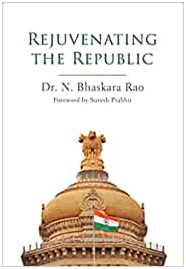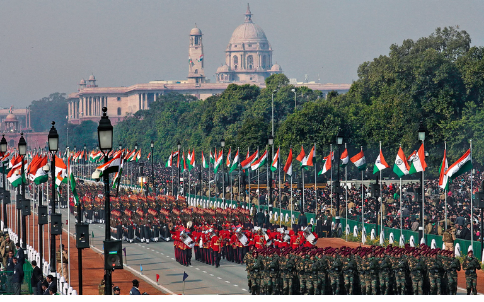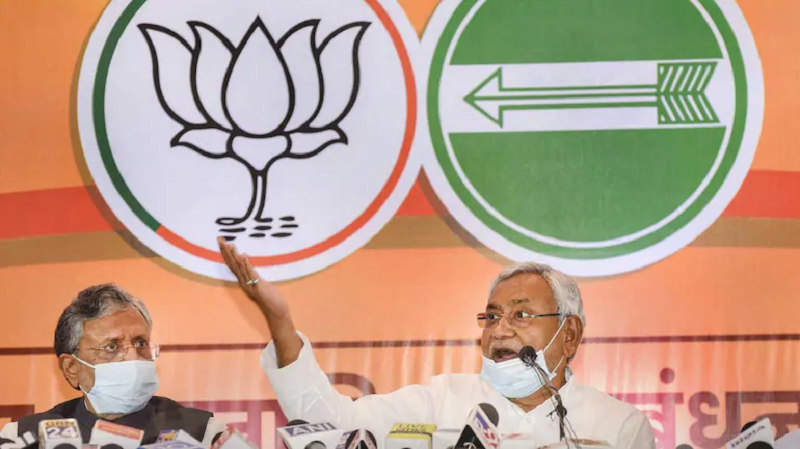Republic Day 2022 has a special significance. It is likely to be a turning point in India’s prospects. Will we continue with the Republic and accomplish what our constitution makers envisioned 75 years ago? Or, since it is glass half empty situation, will we rather go for a second Republic with a new constitution? This dilemma is likely to take twists and turns during 2022-2024. We had 17 general elections as promptly followed by peaceful transition of power even when people rejected an incumbent eight times. We had seen ten different Prime Ministers. That in itself was a miracle compared to many other countries. We have also emerged during these years as a modern state, from being a country torn by communal conflict, poverty ridden and with no industrial infrastructure and illiteracy all across. Today nearly thirty percent of scientific, soft and hard technologists, managerial people in so called western countries are Indians at the helm of state-of-the-art. Even On economic front, we emerged as fourth global power and no longer a country of shortages. All this despite we continue to be most populous, democratic with rule of law and with checks and balance mechanisms.
Also read: Role and responsibility of media in 21st century
New regime
A new regime is unfolding in the country by trying to erase the consolidated one of over six decades. Questioning even the foundations, structures and directions of the past – as if there were no predecessors nor there would be any successors. In the process, the country is witnessing twists and turns in the very past of the Republic India. Apprehensions of critics cannot be ignored. These include: First, it was defaming and demolishing Gandhi-Nehru era. In this process, champions of liberal democracy become scoundrels of yesterday, nationalists become parochialists and builders of modern India are even being bad named, instead of working on those strengths. Second, we are even being told that there was no development of the country before and even freedom movement is being discredited as if the country got freedom at the mercy of the British as Bhiksha. Third, an impression gained is that Government is no longer a continuing entity but only of the majority. All this sounds that without formally providing for, we are on way of a presidential form of rule. This Republic Day hopefully raises a new hope, one of better confidence about our prospects.
This Republic Day at my village with school children
After 52 years I’m taking part in the Republic Day ceremony this year in my native village where my mother used to celebrate January 26 and August 15 like any other festivals. It was at these festivals she demonstrated ‘love their neighbour’ as a value to cherish. I had returned from USA after a PhD on August 15, 1970, just to be part of celebration that my mother used to do as if she was imbibing in children of neighbourhood with fundamentals of human values, with view of “we” and display the idea of inclusiveness invariably ending up with distribution of coconut and gud (jaggery) to everyone. This Republic Day I am hoping to join students and teachers of the High School in the village in setting up which my father played a key role more than 75 years ago.
Back to the villages
A hundred million migrated out of villages to cities in the last decade. Migration flows from villages to cities almost in exodus proportion is well documented including from my village. Can we expect a reversal of that trend? I hear examples of that happening in some parts of the country in the wake of continued uncertainty of pandemic complexities. Coinciding with that trend, I built a new house in my village in place of a hundred year old one with a provision for a children’s library with inspiring books, particularly biographies. I also recall Dr Abdul Kalam’s decade long unsuccessful pursuit with PURA (urban amenities in villages) 2003-2012. He dreamt of reversing migration flow by ensuring civic amenities in village. More than sixty years ago, Kakani Venkata Ratnam, a tall leader of the time, tried first as president of district board and later as MLA and Minister to revive rural communities ensuring basic amenities focusing on schools first in every village. NT Rama Rao remains a legendary leader who discovered more than 20,000 leaders from villages of two states. So many villages stand out as example. Telecom revolution has changed the potential, strengthened road and transport connectivity. And then there are initiatives by some state governments. All this should expedite migration back to village even symbolically. I am hoping to reside in my native village where I imbibed my character, values and groomed my concerns. I have been of course visiting the village at least once a year last thirty years twenty of them along with my father who was also part of a team which spearheaded village development in the earlier decades.
Also read: Kakani, a legendary leader, a true representative of people!
‘Work together’ culture
My village has more than ten basic institutes for many years. They had come up because of decentralization regimes earlier. My village with active freedom fighters (nearly 40 villagers were known) did not suffer intense presence of political parties but benefited. The village visionaries of that time never mixed up party affiliation with development. They prompted discussions and consultations. Village interests never suffered from party or caste or community affiliations. Whatever infrastructure, institutions and basic amenities are there in the village are as old. The spirit of a Republic was so evident, that it facilitated ‘work together’ culture. But villages then had not yet become “colonies” or satellites and citizens dependents on the state. Even voice of people was not replaced by or reduced as that of political parties. Panchayat elections were not on party symbols. The phenomenon of incumbency in electoral practices was not heard during the first couple of elections of the Republic.
Village boy in New Delhi

My recent book, “Rejuvenating the Republic”, takes a realistic assessment of all that of our progress. Should we view it as work in progress, or glass half empty view? Former Union Minister Suresh Prabhu wrote in his Foreword to this book that “a dearth of understanding and appreciation of the fundamentals of the constitution is becoming increasingly evident, even among political leaders”. The book examines the very idea of the Republic, various perceptions about it and ambiguities and dilemma associated with it. It not only identifies the problem areas but also suggests much needed initiatives as transformational interventions. I believe that without addressing these aspects squarely in the next couple of years the vital foundations of democracy, development and governance will not sustain. With more time in the village I now hope to learn more and correct myself of my Delhi centric perspectives. But, I remained a “Village Boy in New Delhi” over the decades.
***
(Dr N. Bhaskara Rao is a research based public policy analyst of long standing and author of over a dozen books).




